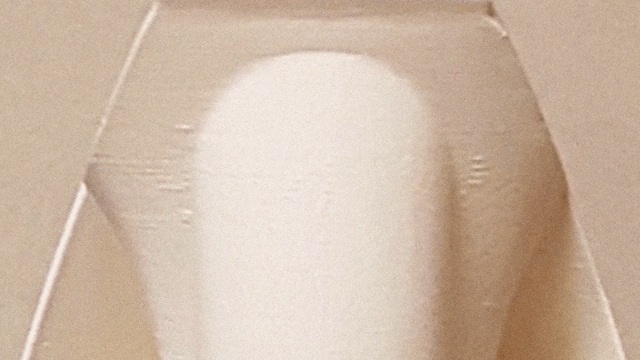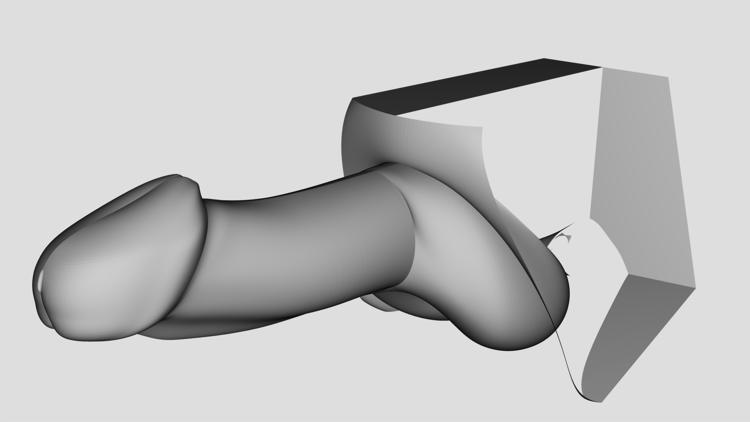My sixth-grader just went through a round of sex education at his middle school. The first thing I learned from him is that he had no idea that I knew anything about what he was being taught and was surprised to find out that I too know both the real and the slang terms for the body parts. So, obviously we have to work a bit on his critical thinking skills. The second thing I learned from him is how sex ed has changed since I was a kid, which is to say, not changed much at all. Sure, the technology has been a bit updated; it took me years to separate the alert noise the filmstrip made when the teacher was supposed to advance a slide from my understanding of how teaching was done. Now, they watch things that are on DVD. In my films, everybody wore bell bottoms; in theirs they wear, well, whatever the hell it is kids wore about five years ago.
 In general, however, the classroom experience is the same. Sit in a semi-darkened room and be handed over into the world of visuals. But this raises an important question: how can students with visual impairments who are now, more often than not, integrated directly into a classroom rather than attending a special school for the blind, learn from a teaching system that is almost entirely image based?
In general, however, the classroom experience is the same. Sit in a semi-darkened room and be handed over into the world of visuals. But this raises an important question: how can students with visual impairments who are now, more often than not, integrated directly into a classroom rather than attending a special school for the blind, learn from a teaching system that is almost entirely image based?
That was the question being asked by the team at Benetech, a social impact technologies-focused nonprofit. Lisa Wadors Verne, Program Manager in Education Research and Partnerships at Benetech, reached out to researchers at San Francisco’s LightHouse for the Blind and Visually Impaired – which also recently hosted a discussion on intimacy and disability – and Northern Illinois University. Together they are 3D printing some models designed to support sex ed and doing pilot tests of their efficacy in the classroom. Verne explained:
“Many of the kids who are blind, because much of the information is presented in photographs or videotapes, they miss out on key information that their peers are able to see. We want to test how much the student learned that maybe they wouldn’t have gotten from just listening to someone talk about this out loud. The other thing we’re going to try to parse out on this too is how valuable is this – how much would a teacher be willing to spend on a model like this.”
 To purchase anatomical models can be quite costly, somewhere in the hundreds of dollars, and many school systems who may have a limited number of blind students may not be able to afford to allocate those kinds of funds towards such a small part of their education. The hope of the researchers involved in this project is that if it is determined that these models make a significant difference in sex education in terms of learning for visually impaired children, that the models can be made freely available as open-source files. This would allow them to be printed on an ‘as needed’ basis with very little lead time and at a greatly reduced cost.
To purchase anatomical models can be quite costly, somewhere in the hundreds of dollars, and many school systems who may have a limited number of blind students may not be able to afford to allocate those kinds of funds towards such a small part of their education. The hope of the researchers involved in this project is that if it is determined that these models make a significant difference in sex education in terms of learning for visually impaired children, that the models can be made freely available as open-source files. This would allow them to be printed on an ‘as needed’ basis with very little lead time and at a greatly reduced cost.
 As more and more schools are acquiring their own in-house 3D printers or at least have access to printing services, we will most likely see an increase not only in models for sex education but across subjects that will help unlock a component of learning for visually impaired students who have only had narration to rely upon previously. These kinds of models range from planetary systems to the inner workings of atoms and are increasingly available through open-source platforms.
As more and more schools are acquiring their own in-house 3D printers or at least have access to printing services, we will most likely see an increase not only in models for sex education but across subjects that will help unlock a component of learning for visually impaired students who have only had narration to rely upon previously. These kinds of models range from planetary systems to the inner workings of atoms and are increasingly available through open-source platforms.
These kinds of models are also the best of what is termed “Universal Design” because not only do they provide necessary information to students who are blind, but can also be extremely helpful for those who are visual learners. Discuss in the Sex Ed forum at 3DPB.com.
[Source/Images: FastCoExist]
Subscribe to Our Email Newsletter
Stay up-to-date on all the latest news from the 3D printing industry and receive information and offers from third party vendors.
You May Also Like
Gorilla Sports GE’s First 3D Printed Titanium Cast
How do you help a gorilla with a broken arm? Sounds like the start of a bad joke a zookeeper might tell, but it’s an actual dilemma recently faced by...
Nylon 3D Printed Parts Made More Functional with Coatings & Colors
Parts 3D printed from polyamide (PA, Nylon) 12 using powder bed fusion (PBF) are a mainstay in the additive manufacturing (AM) industry. While post-finishing processes have improved the porosity of...
$25M to Back Sintavia’s Largest Expansion of Metal 3D Printing Capacity Since 2019
Sintavia, the digital manufacturing company specializing in mission-critical parts for strategic sectors, announced a $25 million investment to increase its production capacity, the largest expansion to its operations since 2019....
Velo3D Initiates Public Offering in a Bid to Strengthen Financial Foundations and Drive Future Growth
Velo3D (NYSE: VLD) has been among a number of publicly traded 3D printing firms that have attempted to weather the current macroeconomic climate. After posting a challenging financial report for 2023,...





























